Click on the image below for the article.

By Dee Brooks
International Community Design Thinker; trainer, host, blender, jester, hugger, nomad
This piece is inspired by Alison Mathie, Coady Institute, Canada who suggested, in 2015 after the ABCD Festival in Blackpool UK, that I write this to share with others… It’s been a while…
Introduction
 I’ve been an Intentional Nomad for over 3 years now and to date, participatory co-designing of meetings, forums, conferences and events is the work that stretches me! Due to not having a physical address or community who I live amongst, I have discovered a few ways to strengthen my own global community while supporting others.
I’ve been an Intentional Nomad for over 3 years now and to date, participatory co-designing of meetings, forums, conferences and events is the work that stretches me! Due to not having a physical address or community who I live amongst, I have discovered a few ways to strengthen my own global community while supporting others.
Most importantly, this work offers the opportunity for others to learn and explore the borders and boundaries of a variety of methodologies and grow from the experience by exploring other complementary intersections. Many of the challenges faced by individuals and communities require transformational change and by focusing on the strengths already found within communities and by inviting people into meaningful dialogue around the topic or challenge, governments, services and agencies have a much better chance of gaining traction, leading to deeper action.
Designing international gatherings across multiple time zones is as thrilling as it is challenging. Over almost 2 decades of delivering training and facilitation for governments, agencies and community groups around the world, I have watched, listened, sensed, learned and developed ways to weave a range of strengths-based approaches. This work is grounded in the grassroots, strengths and asset based skills I have learned, taught and exchanged with others. In addition, facilitation, hosting and training are 3 significantly different styles of working, which can often interweave, and this blog is reflecting on facilitation and hosting only.

Through both co-design and collaboration processes, my purpose is to guide others in design to build their local capacity, and to co-facilitate small to large groups, to support the shift of individual and organisational dialogue towards collective action, particularly blending Asset Based Community Development’s (ABCD) and Participatory Leadership (Art of Hosting) patterns, practices, processes and principles.
Note: The models described below are all from stand-alone methodologies of which patterns and elements have been adapted and tailored for each unique design.
Design Background:
I’m often contacted to specifically host a community conversation or to facilitate an organisational strategic, visioning or planning session. Others might have a vague idea about a challenge &/or issue they would like to address in their community and others have intentionally called me in to lead the programme design of a larger forum or conference.

The Starting Point:
First, we discuss what’s being called for, what is already in planning or what the community or organisation is sensing is needed. There are times when an organisation, for example, might contact me to inquire about a day of community building facilitation for staff and after our initial conversation, they decide instead to host a broader, more inclusive community conversation in relation to their organisation’s community work. Some example of the work undertaken is:

Each design is unique, depending on; individual and community skills and abilities, what’s needed, budget and availability. The timeframes are adjusted according to this and could be one-hour sessions, three-day events, a multi-year programme or anything in between.
The first questions I might ask an organiser, committee or host are:
At the conclusion of the first call, I encourage the organiser/host to invite anyone they mentioned who is also passionate about this topic or challenge into the next conversation where we will form our Core Group and start the deeper design and planning.
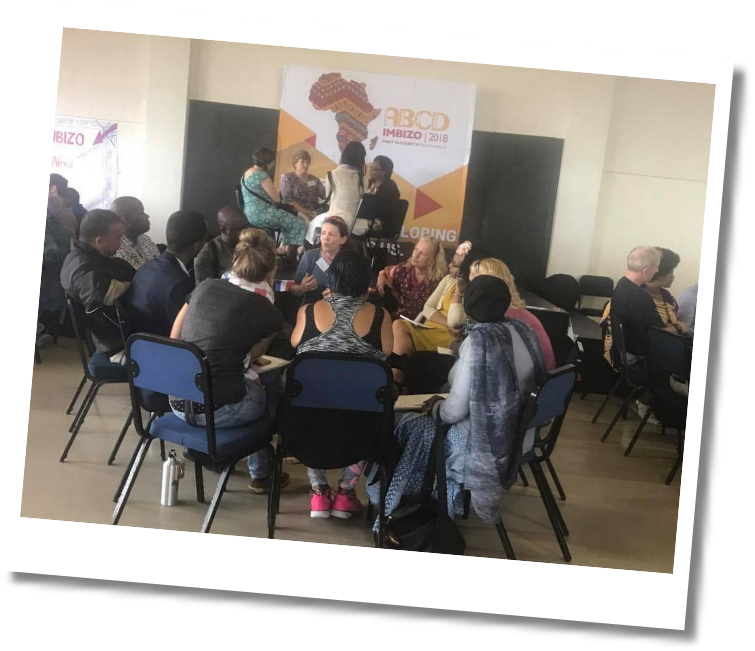 Core Group Conversation:
Core Group Conversation:
The second series of questions is when we have expanded our Core Group and then the focus becomes more about the “what” and the “how”. The groundwork (local) team is organised by the local host, except for long-term programmes.
Groundwork and logistics team tasks:
The Design Detail:
For the programme design team, we draw on people’s strengths and discover what they are willing to offer. There is a flow to follow and some collective choices to make as we begin design.
Programme design team tasks:
The Layers
I’m a visual thinker/learner and I visualise dialogue in multi-layered patterns. In planning with a Core Group, we start with a foundational framework discussion and from there, we start to build and layer the processes and questions onto the foundation until we achieve a reciprocal, co-designed format.
Community Design Thinking:
Based on the above discussions, we start to explore a range of underpinning frameworks to guide our design, keeping the community (or participants) at the centre of the conversation. E.g. What would pique their interest? How do we invite them into deeper conversation? What’s in it for them?
 Underpinning Framework Examples:
Underpinning Framework Examples:
Once the Core Group has decided upon a framework and we have generated a list of ideas to include in the format, for e.g. guest speakers, dancing, collective inquiries, participatory discussions, art/craft etc., I take all of those ideas, hang them on the framework, utilising participatory practices and processes, and send a draft document back to the Core Group where they start offering some feedback and take notice of additions or omissions needed, timings to pay attention to and flow to smoothen out.
The Magic:
Then something magic always happens; as drafts go to and fro, people start to “drop in” and deepen their understanding of the co-design process and as their understanding deepens, excitement builds and people often offer more. Around this time, there comes a “tipping point” where the Core Group take ownership of the co-design and that’s my cue to lead, by stepping back… my role then becomes one of a monitor or “eagle” as I keep an eye on the detail; the tipping point encourages the role swap!
Thinking Design for Design Thinking:
When we’re “thinking about design” for a conversation, meeting, conference or event, we’re already in the space of “design thinking”. What this process offers is a way to shift a traditional framework where people might be being “spoken at” to a more inclusive process where people are at the centre and they are actively encouraged to participate and share their stories, ideas, challenges and barriers.
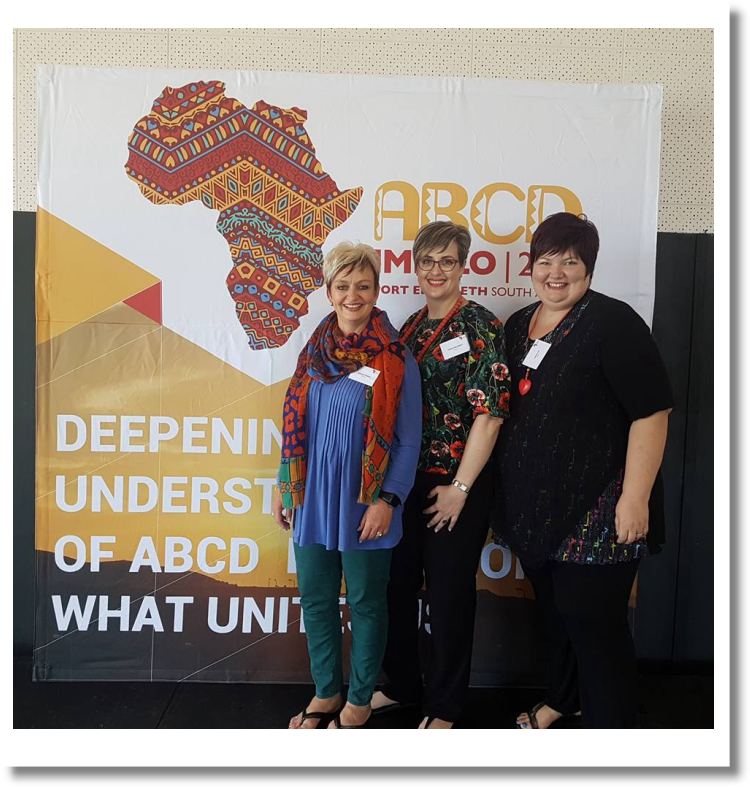 My Fail-Forward Work:
My Fail-Forward Work:
Each co-design is unique and is based on the skills, abilities, passions and offers of local people and attending participants. My goal is to support the co-design process from the first call, right throughout the event and beyond! Sometimes I facilitate at the event, sometimes I don’t… sometimes we have a day of design on the day before the event, sometimes we don’t… that depends on the group!
This way of working now shapes most of my work and the work of my Jeder community building colleagues. We have co-designed conferences with Core Groups, across multiple time zones, in the UK, India, New Zealand, Australia and South Africa. In addition, this way of co-designing has also guided our workshops and training offerings in ABCD, the Art of Hosting and the Art of Participatory Community Building in Indonesia, South Africa, Singapore, New Zealand, Australia, India, Greece and more…
From Me to We:
Working with others in deep design and open collaboration is rewarding and challenging both from an individual perspective and for the collective teaching and learning I gain each time. As for the patterns, practices and processes; everything old is new again; it’s not rocket science although, it is about how the Core Team trust each other and blend their skills and abilities together and how the final design is co-hosted and facilitated that brings traction and action to an inclusive, participatory event!
By Dee Brooks
One way to discover the gifts that you, and others, can offer your community is through an exercise we call the “5H’s” (you can find examples of how you might facilitate this as an activity by clicking on the link above). Based on the ABCD Institute’s “Head, Hand, Heart” activity, it encourages people to explore their hidden talents, skills and passions and explore how they can, or already do, share those with others.

Once these gifts have been uncovered, and there will be A LOT, you can follow these simple but powerful steps to get these gifts organised into practical action!
 Broad Steps:
Broad Steps:
SIT BACK AND WATCH THE MAGIC!!!
(Example from the SILE project, Makassar and Surabaya, Indonesia)
Below are two (2) examples:


These examples are from a project I worked on with an ABCD mate, Om Dhungel, in Sydney, Australia. The project was empowering refugee and asylum seekers to share their skills, talents and abilities and work together for common good. As you can see below, the group particularly wanted to look at how to start up a grassroots organisation.

The incredible discovery from this exercise was that they already had what they needed in the room, through the skills, talents and abilities of the various community members. The buzz in the room was palpable and the excitement grew over the next few months as these participants shared their findings back to their communities and started to gather more assets and stories.
This is how we start discovering the hidden treasures in community! This is what the glass half full looks like! This is how we build community from the inside out!
It’s as easy as ABCD!
By Dee Brooks
You may have heard of Asset Based Community-Driven Development or ABCD but what does it mean? How does it support community initiatives? Dee Brooks shares her insights in how ABCD supports community-driven initiatives.
Dee is a founding member and Facilitator of the ABCD Asia Pacific Network, an accredited ABCD trainer, an Art of Hosting trained facilitator, a Flow Game Host and a DRUMBEAT Facilitator.
Dee is an International Faculty Member of the ABCD Institute, a Steward of the international ABCD in Action Network and a founding member of the Unconference.


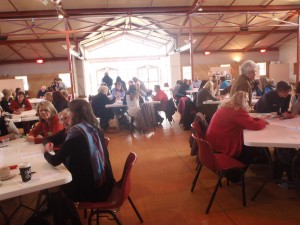
For more information on Asset Based Community Development contact Dee Brooks dee@jeder.com.au or Michelle Dunscombe michelle@jeder.com.au
June 2015 saw us pack our bags and head for the UK, well specifically Ribby Hall, Wrea Green Lancashire in England’s North West for the 2015 ABCD Festival.
We had read the program, in fact assisted with writing the program with the ABCD team. We were looking forward to meeting very skilled ABCD practitioners and of course welcoming newbies to ABCD from around the world. Yes, we were excited.
From the moment we arrived we knew we were in the right place at the right time. We got straight into the spirit and helped deliver participants food hampers, what a great way to get to know fellow participants. It became evident that the festival had attracted people from diverse backgrounds and countries. In fact, almost 200 festival goers from 21 countries. The opportunity to immerse ourselves in 5 day learning environment with like-minded people with diverse experience and knowledge was one we were definitely going to embrace.
As the festival got underway the opportunity to hear from an amazing line up of presenters including John McKnight, Jody Kretzmann, Cormac Russell and our Aussie colleague Peter Kenyon allowed us to reflect on our practice, understand where ABCD came from and where the future may lead and listen to some entertaining stories. Colleagues from South Africa, Canada and England shared stories of ABCD application in a variety of settings.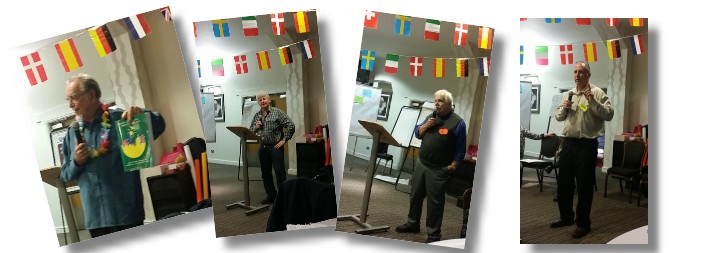
Topic tents was the real “GOLD” of the festival, Dee did an amazing job of co-ordinating the sessions to allow participants to explore issues important to them or join a discussion that appealed to them. As always the best learnings and connections were made over discussions during the breaks, meal times and evening activities.
The festival embraced the “community” spirit, providing us with the opportunity to cook an evening meal for other festival goers and have others prepare an evening meal for us. A highlight and pleasure of the festival was to hosting our Vietnamese neighbours and to be hosted the following night by our Dutch colleagues for dinner. A great opportunity to swap stories and learn from each other.
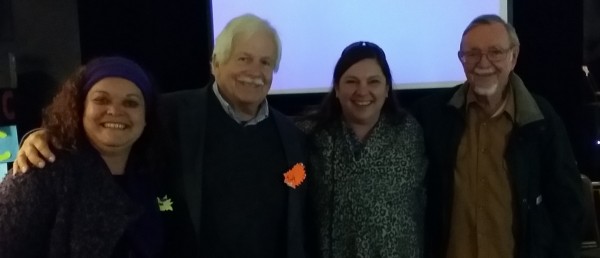
Highlights for Michelle were abundant although being able to connect with John and Jody in person gaining a deeper understanding of the history of the Asset Based Community Development movement, meeting Jody’s talented wife Ingrid and the expert team from Coady and having the opportunity to spend some time with Peter Kenyon were definite moments of total gratitude. Michelle was inspired by the passion of all delegates for community and the collective understanding that communities have the skills and passion to lead change for things that they care deeply about. As John McKnight noted in his presentation “It’s about democracy” and for Michelle, ABCD is all about valuing and listening to everyone in communities. Leaving the festival was difficult after having 5 days of total immersion in ABCD however on a high note, Michelle’s tool kit is overflowing with knowledge, stories and experiences from the ABCD collective.
Highlights for Dee were also many! Being able to connect face-to-face with practitioners who had previously only been faces on Skype or names in an email was the best experience. Catching up with Jody Kretzmann, after many years since his last visit to Australia, was a wonderful way to start the week and learning more about Ingrid’s inspiring work was a bonus along with spending time with John and Marsha! Facilitating the Topic Tents and Open Space sessions are always a blast but this one was special; it’s not often that so many ABCD practitioners are in the one room together so, “organising the organisers” was definitely a highlight! Team Coady’s input from many different countries assisted in a rich sharing of knowledge and wisdom and, as is usual, the evening gatherings, after a big day of work, were where deeper connections were made over a pint or two! The success of the festival guarantees the likelihood of future gatherings and we are looking forward to being part of the team again and meeting more like-minded people through our participation.
As Jody said, in his closing remarks, “[ABCD practitioners] are Defenders of the Small. The smaller we remain [in practice], the more we are able to focus on the local and the more powerful the movement is.”
With this said, we invite you consider to start thinking big about thinking small and join us on the wave of change!
Yours in community,
Michelle and Dee
ABCD Asia Pacific Facilitators
By Michelle Dunscombe
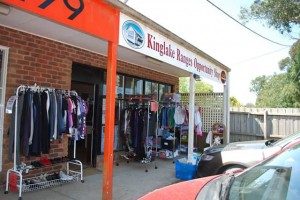
When you walk into your local Op Shop what do you see? Probably just a range of second hand goods at a bargain price.
You may be aware that you are supporting a charity or a local community organisation but what you don’t see or consider is the great social impact and community building roles your local op shop plays in your community.
Many Op Shops are not just a social enterprise supporting community through the sale of goods, did you know they
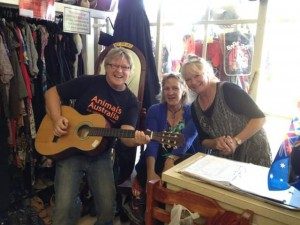
Op Shops are in the business of building a sense of community, connecting people, creating opportunities for residents to explore possibilities and providing a common purpose for their volunteers.
Definitely, more than just a 2nd hand shop – they provide opportunities.
When you shop at your local op shop you are not just getting a bargain you are recycling, supporting community building activities and contributing to real grassroots asset based community development in your town.
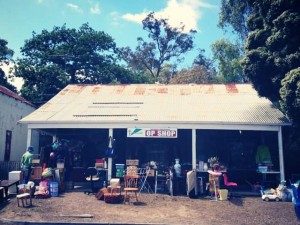
Ever been a part of a footy club? You soon get to know who is the plumber, the accountant, the builder, the student etc. Clubs are adept at learning what skills and abilities players and members have to share. In Asset Based Community Development terms, they map their people assets.
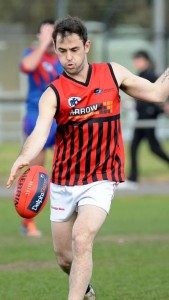
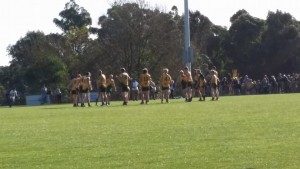
ABCD & : productive and powerful together!
By Dee Brooks
There’s a key area of ABCD community building and/or asset mapping which I emphasise strongly in workshops and it’s one of the powerful, blended areas between ABCD and Art of Hosting work which helps with turning ideas into actions!
In Connect! Don’t Collect: The Art of Community Mapping, we looked at the 3 key steps of asset mapping:
Discovery:ABCDoffers a way for communities to discover their untapped resources, uncover individual talents, skills and abilities and link to organisational or service supports. It’s the discovery of these often hidden treasures that gets people super excited and keen to move forward looking through the glass half full lens!
Join the assets together:ABCD offers frameworks to discover shared talents and skills, where can they be joined together in a physical environment and what (if anything) can organisations or services offer to strengthen what communities are already doing? New ideas emerge from reciprocal community conversations and practitioners, by building community capacity, lead by stepping back!
Create opportunities:Opportunities create more opportunities! Through the Art of Hosting’s participatory leadership practices and processes, the new ideas, which are emerging, can take concrete shape. The following are some, but by no means all, of the practices which community members can learn how to facilitate, self-direct and support each other in moving forward:
Circle Practiceis the basic form underlining all other forms of participatory process. In every type of organization or group, we meet in circles (even if they are around a boardroom table) to plan for the future, handle crisis, and listen to each other.Meeting in circle can be especially helpful when getting to know each other and the issue at hand, or as a means for deep reflection or consensus making.
World Café is a facilitated dialogue process for anywhere from 10 to 1000 people and imitates a café setting where small groups (4-6 people per group) are in conversation about an issue to find out what a community is thinking and feeling about a topic.
Open Space Technologyis a powerful tool for engaging large groups of people in discussions to explore particular questions or issues. It can be used with groups from anything between 10 and 1,000 people.Convened around a calling question, the space is opened for anyone to pose a session topic. Over the course of the meeting, people are free to choose which session(s) they most want to attend, bringing maximum enthusiasm and commitment for conversation and action. Personal buy-in and committed action can be achieved in a remarkably short time.
Theory U is a framework (or way) to understand and design social change. It’s an approach that focuses as much on the inner condition of participants as the outer work of changing systems and culture.Theory U can be useful for building community, finding fresh solutions and redesigning service approaches.

By creating the opportunity for people to engage with each other around conversations that matter, combined with the identification of the myriad of community strengths and assets, powerful engagement and productive work can thrive ascommunities discover; their own potential to address local challenges, their ability to learn from shared successes and their unique power when tapped into their collective wisdom!
If you would like to join us for some Art Of Hosting Training please register here
The following paper has been written from the perspective of two former staff members from the Family Action Centre (FAC), University of Newcastle; a strengths-based centre that was an early adopter and pioneer of ABCD work in Australia. The authors have both since left the employment of the FAC, yet, continue to support the work of ABCD in their current roles. They would also like to note the influential work undertaken by other Australian ABCD practitioners and supporters, particularly Ric Thompson, Chris Dureau, Peter Kenyon, Amanda Howard and Ted Smeaton (vale), who have all been major influencers in the development and application of ABCD in Australia.
When reflecting on the way in which the ABCD approach has impacted on policy and practice in Australia over the last 30 years, we must look for the use of the underlying principles, language and strategies that are utilised in community development work, rather than looking for the explicit naming of the implementation of the ABCD Model. When reflecting over the history of ABCD in Australia and reviewing the early meetings, conversations and consultancies and the focus of government policies at a state and a national level, it is clear that ABCD had a significant influence on shifting Australian practice from a deficit framework to one of abundance.
For Government in Australia and for service providers, there seems to be a tendency to learn and extract from a variety of avenues that are helpful and relevant and to create your own model for your particular work at hand. Our governments often appear to not explicitly adopt one model, allowing them to be more accountable to the political powers and to the sector and not to be seen as favouring one model or one individual or group of people who promote it. For instance last year when a representative of a government department, who through dialogue, was clearly using ABCD principles, was asked why they weren’t explicit about their ABCD approach. Their response was, “We can’t be seen to endorse one particular model” therefore, their history of adopting ABCD was lost, but the ABCD principals that underline their policies and guidelines remain.

During the late 1990s and 2000 until 2010, the FAC gained sponsorship from the Australian government for the “Building Family and Community Strengths” Conferences for many years and this included two ABCD Asia Pacific Conferences in 2008 and 2010. Many services and organisations, from across the Asia Pacific region, delivered talks on their use of ABCD in their approach and subsequently gained their own further funding for future ABCD work. It is therefore assumed that the Australian government clearly endorsed the ABCD approach to working with families and communities across our nation.
At times, over the many years of delivering ABCD training to thousands of people from many organisations and departments, which are later discussed, professionals working at a service provision or a management level have said, “This fits so well with my role!” and when appropriate, it becomes an opportunity to provide them the background information about their organisation or department’s history of the adoption of ABCD principles and is often met with delight and surprise.
In 1999 after the first Family and community Strengths conference held by the FAC, University of Newcastle, a local ABCD Network was established and this became a vehicle to discuss the application of the ABCD principles to both academic, bureaucratic and service delivery aspects of family and community work. Eventually this network became more representative of the Australian region and eventually included the Asia Pacific region.
From 2000 until 2010, Jody Kretman and Mike Green (ABCD for Inclusion), who are ABCD Institute founders and faculty members respectively, were hosted by the FAC to provide ABCD training to practitioners throughout Australia. These three-day workshops were popular and enabled the FAC to empower local trainers to be able to deliver training throughout Australia from a local perspective.
 In 2009, the above mentioned, unfunded network, the ABCD Asia Pacific network, was formally founded by a group of Australian and New Zealand practitioners and was initially managed by the FAC. Dee Brooks became the Facilitator and Ted Smeaton became the Chair. The network has now merged with ABCD in Action (a global network) and continues to support practitioners, throughout the Asia Pacific, to this day.
In 2009, the above mentioned, unfunded network, the ABCD Asia Pacific network, was formally founded by a group of Australian and New Zealand practitioners and was initially managed by the FAC. Dee Brooks became the Facilitator and Ted Smeaton became the Chair. The network has now merged with ABCD in Action (a global network) and continues to support practitioners, throughout the Asia Pacific, to this day.
So, let’s have a look at who was influenced, discover the fundamental history of Australian asset-based community development and celebrate ABCD in Australia!
Communities for Children (CfC):
CfC was one of three models of service delivery funded under the Australian Government’s Stronger Families and Communities Strategy 2004, to improve community capacity and improve the community context for children and their families in 45 disadvantaged geographic areas around Australia to develop and implement a whole-of-community approach. This model utilised a strong bottom up approach, encouraged asset mapping and building partnerships and initially employed area managers who had a working knowledge of ABCD.
ABCD’s early contributions that influenced the development of C4C model:
2001: The FAC, University of Newcastle organised a visit by Jody Kretzman to Australia and whilst in the country Jody Kretzman and Ingrid Christiansen from the ABCD Institute and Judi Geggie, FAC, met with Federal Government in Canberra, ACT and Premier’s Department in Sydney NSW.
2002: Jody Ketzman and Judi Geggie presented ABCD in Action at the Federal departments family and community section, and it was televised through the governments teleconferencing network through the department’s state offices.
2004: Federal Department of Family & Community Services Panel of Experts of the Stronger Family and Communities Strategy (including Judi Geggie and Gus Eddy,FAC) provided ABCD training in Queensland and NSW.
2004: The Family Action Centre (FAC) submitted and successfully gained funding, in partnership with the Smith Family, for Communities for Children (CfC). This position stayed with the FAC for a decade and is currently ongoing, with ABCD trained practitioners, through the auspice of the Smith Family.
Community Drug Action Teams (CDAT) Australian Drug Foundation (ADF):
Established in 2000 and initially part of the NSW Department of Health, CDAT’s revolve around community members, local services providers and business-people who share a desire to work with others to make a difference and a passion for making their community safer, healthier, stronger, and more connected across New South Wales.
ABCD’s early contributions:
2004: ABCD training, Simone Silberberg, Family Action Centre, University of Newcastle delivered training to all CDAT’s across the Hunter Valley
2008: NSW Department of Health in conjunction with CDAT’s publish “Building Successful Community Drug Action Teams: A Practical Guide” and name ABCD as a foundational methodology
2009: ABCD training, Dee Brooks, Family Action Centre, University of Newcastle delivered training to all CDAT’s across the Hunter Valley, New England, Sydney and South Coast communities
2010: Dee Brooks presented previous ABCD undertakings and outcomes at annual CDAT Conference, Wollongong, NSW
2012: Dee Brooks co-designed and facilitated CDAT Hunter New England Forum, Newcastle, NSW.
2016: Dee Brooks was invited as an external assessor for the 2016 funding round for NSW CDAT’s and as a panel judge for annual CDAT conference awards in Sydney, NSW.
Ability Links NSW & The National Disability Insurance Scheme (NDIS):
The Ability Links NSW program was developed as a response to the upcoming NDIS and is a way of connecting people with a disability, their families and carers in the community. Linkers work closely with people with disability, their families and carers to support them to fulfill their goals, hopes and dreams. Providers are the organisations that offer services to people with disability and the community. Linkers are auspiced by these Providers.
Note: The NDIS launched in July 2013 to ensure that people with a disability and their carers receive full access to the support they need, the NDIS has a vision of a community that values people with disabilities.
ABCD’s contributions:
2010: ABCD training, Department of Ageing, Disability and Home Care (ADHC)
2011: Ted Smeaton (Vale) advised ADHC on the role of a ‘linker’ and co-developed the Ability Links job description
2013-2015: Dee Brooks, Family Action Centre, University of Newcastle (& later the Jeder Institute) rolled out ABCD training for the Ability Links program for 280 Linkers across NSW
2013: ABCD Staff Training for Department of Aging, Disability and Home Care (ADHC); Newcastle, Sydney, Wollongong, Northern Rivers Region
Defence Community Organisation (DCO) Australian Defence Force (ADF):
The DCO believes that Defence families are strongest when they are connected with their local communities. DCO provides a number of support and information services to help individuals and families connect with and contribute to their community, and to engage the wider community in support of Defence families.
ABCD’s contributions:
2010-2012: ABCD training across Australia with all area offices in each state and territory provided by Dee Brooks & Graeme Stuart, Family Action Centre, University of Newcastle in conjunction with Maureen Greet, DCO.
2012: Defence Family Forum, Sydney Convention and Exhibition Centre, Darling Harbour with process facilitation provided by Dee Brooks and Graeme Stuart, FAC, University of Newcastle.
Engagement Australia University-Community Engagement (UCE):
University-Community engagement has increased in importance and popularity over the past decade in teaching course work, expanding community outreach, guiding student placement and implementing university staff in-reach.
ABCD’s contributions:
2005: ABCD incorporated into the Bachelor of Social Work, Bachelor of Development Studies and the Bachelor of Arts/Bachelor of Primary degree at the University of Newcastle
2007: ABCD incorporated into the Capacity Building in Human Services – Masters of Social Change studies at University of Newcastle
2008: ABCD incorporated into the Community Engagement and School and Community Partnerships studies at University of Newcastle
2013: ABCD & Participatory Leadership facilitation for Engagement Australia Annual Conference
2015-2016: ABCD Masterclasses delivered in Surabaya and Makassar, Indonesia for the SILE project’s Islamic Universities
2016: ICONUCE Masterclass, Surabaya, Indonesia
These are just some of the FAC and Jeder’s historical moments. There have been many other areas influence by ABCD, over the years, and below are some of the sectors or areas that have also been impacted by this work, including the future, ongoing work of ABCD in Australia which is also expanding into a diverse range of communities.
Local government
Numerous local government departments have utilised the skills and training options of ABCD consultants ranging from one-day workshops to medium and long-term projects. The impact on communities across Australia can be noted by the stories shared by service providers within the community and they are diverse. Peter Kenyon from the Bank of IDEAS has led the ABCD implementation, particularly in Victoria with the Municipality Association of Victoria (MAV), and in other states of Australia, for many decades. Dee Brooks has worked with many local councils over the past 15 years and many of the earlier ABCD workshops led by Jody Kretzman was attended by numerous local government personnel.
Disaster Recovery and community resilience:
The disaster recovery and emergency management sector has applied ABCD in various ways over the years. From seeking support and guidance for Australian Emergency Management Institute’s (AEMI) policies and teaching frameworks to explicitly mentioning ABCD in the current Emergency Management Victoria’s community strategy. Michelle Dunscombe, who has been trained over the years by Dee Brooks and Peter Kenyon, has worked in the disaster recovery and emergency management sector for many years in Victoria and supports groups like Firefoxes and the Rivers and Ranges Leadership program by applying the principles of ABCD.
AusAID: (now DFAT)
Since 2005, Chris Dureau has championed ABCD in the international development sector. Chris has worked with a diverse range of communities both in Australia and around the world. Country programs where ABCD and other strength based thinking has been introduced by Chris Dureau through the Australian Development Program include:
Refugee and Asylum Seeker communities:
Both Peter Kenyon and Dee Brooks have worked intermittently with the NSW Service for the Treatment & Rehabilitation of Torture & Trauma Survivors (STARTTS) and have supported them through ABCD workshops. More recently, Dee Brooks has supported the Australian-Bhutanese community and the Australian-South Sudanese community to move their community-led initiatives forward. Om Dhungel has been a pivotal part of the ABCD practice being undertaken in this sector.
 The Ochre Report:
The Ochre Report:
The Ochre Report which is the NSW Government Plan for Aboriginal Affairs that is focused on revitalising and promoting Aboriginal language and culture, creating opportunities, increasing people’s capacity, providing choice and empowering people to exercise that choice, as well as giving them the tools to take responsibility for their own future. Dee Brooks and Michelle Dunscombe, Jeder Institute, are currently in development with Aboriginal Affairs to deliver ABCD workshops across NSW.
The Current Nature of ABCD in Australia: On the shoulders of giants
There is no one way that ABCD is applied in Australia. Some community-based ABCD groups start small and informal and are not always guided by local government or dollars, and yet, others are guided and funded. Each group we support, discuss with or discover have a variety of ways they apply ABCD and often times, it is in conjunction with other methodologies like Appreciative Inquiry, Results Based Accountability, Collective Impact, Art of Hosting and more.
Individual practitioners are having an impact in various areas including, health, housing, defence, homelessness, education, settlement, veterinary science (yes, really!), youth work and the list goes on…
At the heart of what these individuals, groups and organisations are doing is community empowerment and the passion to work differently to bring stakeholders together and to create productive and powerful change.
So what is the current nature of ABCD in Australia? We believe it is localised, formal, informal, guided, emergent but, above all, empowering and connected!
A simple guide to discovering people’s gifts!
The gifts of the head, hand and heart exercise can be adapted in many ways. Below are some ways that people have used the exercise although, feel free to be as creative as you like in using the exercise to generate conversations between individuals, with groups or the larger community.
Overview of the gifts:
After introducing the gifts, you could offer the following conversational approaches as a group exercise. Make sure you let people know how long they will have each (3, 5 or 10 minutes?):
If you feel like getting more creative, you might like to try the following:
BE CREATIVE! LISTEN! LEARN! HAVE FUN!
See also: Post Growth Institute example & Harvard College Social Innovation Collaboration example